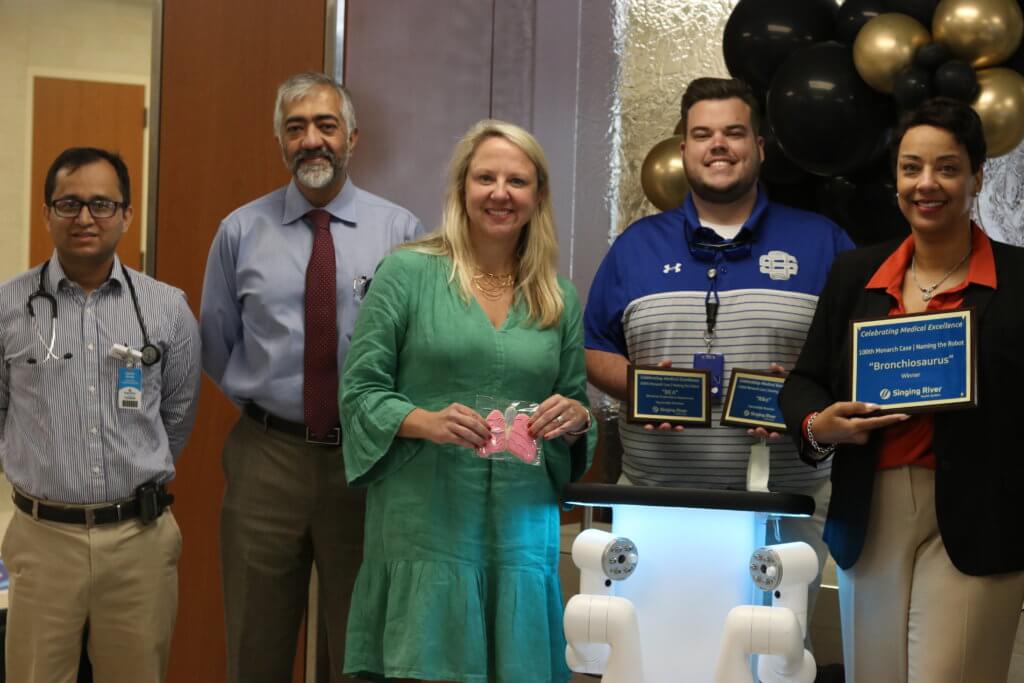Singing River Health System Celebrates 100th Monarch Patient Case

A new innovation that holds promise to fight lung cancer has been in use at Singing River’s Ocean Springs Hospital location and the hospital recently achieved treatment of its 100th Monarch patient case utilizing this advanced technology. The Monarch robotic technology is used to view the inside of the lungs and obtain a tissue sample for biopsy. The goal of Auris Health’s Monarch™ Platform is to enable an earlier and more accurate diagnosis of small and hard-to-reach nodules in the periphery of the lung.
A milestone celebration was held inside the Ocean Springs Hospital on Thursday, September 29. The Ocean Springs Hospital partnered with the Ocean Springs School District’s robotics team to establish an official name for the robot. Tiffany Murdock, CEO of Singing River, presented the awards of the robot. The names up for recognition were as follows: Honorable Mention BEA (Broncho Exploratory Apparatus); Honorable Mention Rico; and the winning name selected for the Monarch robotic technology was Bronchiosaurus.
The technology integrates the latest advancements in robotics, software, data science, and endoscopy (the use of small cameras and tools to enter the body through its natural openings). Singing River Health System is among the first hospitals in the United States to utilize the platform, which was recently cleared by the U.S. Food and Drug Administration (FDA).
“Lung cancer is the leading cause of cancer deaths worldwide, in part because it has no symptoms in its early stages. Because the Monarch Platform provides improved reach, vision, and control for bronchoscopic procedures, it holds the potential to help us to make a diagnosis earlier. We are excited about the promise of this technology to offer a more hopeful future for our patients with lung cancer.”
– Dr Babar, Pulmonologist, Director of Pulmonary Critical Care and Pulmonary Hypertension at Singing River Health System
More than 90 percent of people diagnosed with lung cancer do not survive the disease, in part because it is often found at an advanced stage. There are a variety of diagnostic options currently available for lung cancer, but all have limitations in accuracy, safety, or invasiveness. These limitations can lead to false positives, false negatives, or side effects such as pneumothorax (collapsed lung) and hemorrhage, which may increase health care costs and extend hospital stays.
The Monarch Platform utilizes a familiar controller-like interface that physicians use to navigate the flexible robotic endoscope to the periphery of the lung with improved reach, vision, and control. Combining traditional endoscopic views of the lung with computer-assisted navigation based on 3-D models of the patient’s own lung anatomy, the Monarch Platform provides physicians with continuous bronchoscope vision throughout the entire procedure.